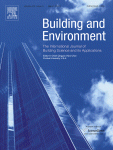
Mosque building is characterized by its unique spatial requirements and intermittent occupancy pattern. In order to create a suitable ambiance for prayers, maintaining optimum thermal comfort of the interior is a must. As mosques are skin-load dominated buildings, the climatic conditions play a defining role in the thermal comfort of the users as well as the energy efficiency of the building. Therefore, appropriate building envelope designing that ensures optimal thermal performance is required to protect the interior from the external harsh climate and to ensure better thermal comfort for the users. Additionally, improving the overall thermal performance of the building allows reduced energy consumption and ensures improved energy efficiency. However, research in this niche is an emerging field and much work needs to be done to establish design standards. This review paper conducts a comprehensive literature review with the aim of identifying important aspects of mosque thermal performance. With this intent, the paper classifies findings from literature according to building design elements as well as different components of the mosque envelope such as walls, roofs and windows. Thereafter, it discusses the impact of the corresponding characteristics and parameters on the overall thermal performance of mosque buildings. As a result of this review, various research gaps and potential research prospects have been identified in different aspects of mosque designing. The paper concludes with suggesting prospective research scopes that may serve as a foundation for future research endeavors.
I agree to the terms outlined below:
You agree to upload and assign Mosqpedia Database the rights to use the content worldwide and in perpetuity across all current and future media platforms. Mosqpedia Database may edit, copy, adapt and translate your contribution.
The content will be distributed under the Creative Commons Attribution-Deed – Attribution-NonCommercial-NoDerivatives 4.0 International – Creative Commons
All data will be stored in line with data protection regulations.